- Home
- Orhan Pamuk
My Name is Red Page 44
My Name is Red Read online
Page 44
Alone again, I placed the needle that Master Bihzad had used to blind himself upon the open page of the Book of Kings and gazed at it. It wasn’t the needle he’d blinded himself with that made me shudder, but seeing an object he’d taken into his miraculous hands.
Why did Shah Tahmasp send this terrifying needle with the book he’d presented to Sultan Selim? Was it because this Shah, who as a child was a student of Bihzad’s and a patron of artists in his youth, had changed in his old age, distancing poets and artists from his inner circle and giving himself over entirely to faith and worship? Was this the reason he was willing to relinquish this exquisite book, which the greatest of masters had labored over for ten years? Had he sent this needle so all would know that the great artist was blinded of his own volition or, as was rumored for a time, to make the statement that whosoever beheld the pages of this book even once would no longer wish to see anything else in this world? In any event, this volume was no longer considered a masterpiece by the Shah, who felt poignant regret, afraid that he’d committed a sacrilege through his youthful love of illustrating, as happened with many rulers in their old age.
I was reminded of stories told by spiteful illuminators who’d grown old to find their dreams unfulfilled: As the armies of the Blacksheep ruler, Jihan Shah, were poised to enter Shiraz, Ibn Hüsam, the city’s legendary Head Illuminator, declared, “I refuse to paint in any other way,” and had his apprentice blind him with a hot iron. Among the miniaturists that the armies of Sultan Selim the Grim brought back to Istanbul after the defeat of Shah Ismail, the capture of Tabriz and the plunder of the Seven Heavens Palace was an old Persian master who it was rumored blinded himself with medicines because he believed he could never bring himself to paint in the Ottoman style — not as the result of an illness he’d had on the road as some claimed. To set an example for them, I used to tell my illuminators in their moments of frustration how Bihzad had blinded himself.
Was there no other recourse? If a master miniaturist made use of the new methods here and there in out-of-the-way places, couldn’t he then, if only a little, save the entire workshop and the styles of the old masters?
There was a dark stain on the extremely sharp point of the elegantly tapered plume needle, yet my weary eyes couldn’t determine whether it was blood or not. Lowering the magnifying lens, as if beholding a melancholy depiction of love with a matching sense of melancholy, I looked at the needle for a long time. I tried to imagine how Bihzad could’ve done it. I’d heard that one doesn’t go blind immediately; the velvety darkness descends slowly, sometimes after days, sometimes after months, as with old men who go blind naturally.
I’d caught sight of it while passing into the next room; I stood and looked, yes, there it was: an ivory mirror with a twisted handle and thick ebony frame, its length nicely embellished with script. I sat down again and gazed at my own eyes. How beautifully the flame of the candle danced in my pupils — which had witnessed my hand paint for sixty years.
“How had Master Bihzad done it?” I asked myself once more.
Never once taking my eyes off the mirror, with the practiced movements of a woman applying kohl to her eyelids, my hand found the needle on its own. Without hesitation, as if making a hole at the end of an ostrich egg soon to be embellished, I bravely, calmly and firmly pressed the needle into the pupil of my right eye. My innards sank, not because I felt what I was doing, but because I saw what I was doing. I pushed the needle into my eye to the depth of a quarter the length of a finger, then removed it.
In the couplet worked into the frame of the mirror, the poet had wished the observer eternal beauty and wisdom — and eternal life to the mirror itself.
Smiling, I did the same to my other eye.
For a long while I didn’t move. I stared at the world — at everything.
As I’d surmised, the colors of the world did not darken, but seemed to bleed ever so gently into one another. I could still more or less see.
The pale light of the sun fell over the red and oxblood cloth of the Treasury. In the accustomed ceremony, the Head Treasurer and his men broke the seal and opened the lock and the door. Jezmi Agha changed the chamber pots, lamps and brazier, brought in fresh bread and dried mulberries and announced to the others that we would continue searching for the horses with oddly drawn nostrils within Our Sultan’s books. What could be more exquisite than looking at the world’s most beautiful pictures while trying to recollect God’s vision of the world?
FIFTY-THREE
I AM CALLED BLACK
When the Head Treasurer and the chief officers opened the portal with great ceremony my eyes were so accustomed to the velvety red aura of the Treasury rooms that the early morning winter sunlight filtering in from the courtyard of the Royal Private Quarters of the Enderun seemed terrifying. I stood dead still, as did Master Osman himself: If I moved, it seemed, the clues we sought in the moldy, dusty and tangible air of the Treasury might escape.
With curious amazement, as if seeing some magnificent object for the first time, Master Osman stared at the light cascading toward us between the heads of the Treasury chiefs lined up in rows on either side of the open portal.
The night before, I watched him as he turned the pages of the Book of Kings. I noticed this same expression of astonishment pass over his face as his shadow, cast upon the wall, trembled faintly, his head carefully sank down toward his magnifying lens, and his lips first contorted delicately, as if preparing to reveal a pleasant secret, then twitched as he gazed in awe at an illustration.
After the portal was shut again, I wandered impatiently between rooms ever more restless; I thought nervously that we wouldn’t have time to cull enough information from the books in the Treasury. I sensed that Master Osman couldn’t focus adequately on his task, and I confessed my misgivings to him.
Like a genuine master grown accustomed to caressing his apprentices, he held my hand in a pleasing way. “Men like us have no choice but to try to see the world the way God does and to resign ourselves to His justice,” he said. “And here, among these pictures and possessions, I have the strong sensation that these two things are beginning to converge: As we approach God’s vision of the world, His justice approaches us. See here, the needle Master Bihzad blinded himself with…”
Master Osman callously told the story of the needle, and I scrutinized the extremely sharp point of this disagreeable object beneath the magnifying glass which he lowered so I might better see; a pinkish film covered its tip.
“The old masters,” Master Osman said, “would suffer pangs of conscience about changing their talent, colors and methods. They’d consider it dishonorable to see the world one day as an Eastern shah commanded, the next, as a Western ruler did — which is what the artists of our day do.”
His eyes were neither trained on mine nor upon the pages in front of him. It seemed as though he were gazing at a distant unattainable whiteness. In a page of the Book of Kings lying open before him, Persian and Turanian armies clashed with all their force. As horses fought shoulder to shoulder, enraged heroic warriors drew their swords and slaughtered one another with the color and joy of a festival, their armor pierced by the lances of the cavalry, their heads and arms severed, their bodies hacked apart or cloven in two, strewn all over the field.
“When the great masters of old were forced to adopt the styles of victors and imitate their miniaturists, they preserved their honor by using a needle to heroically bring on the blindness that the labors of painting would’ve caused in time. Yes, before the pureness of God’s darkness fell over their eyes like a divine reward, they’d stare at a masterpiece ceaselessly for hours or even days, and because they stubbornly stared out of bowed heads, the meaning and world of those pictures — spotted with blood dripping from their eyes — would take the place of all the evil they suffered, and as their eyes ever so slowly clouded over they’d approach blindness in peace. Do you have any idea which illustration I’d want to stare at till I’d attained the divine black
ness of the blind?”
Like a man trying to recall a childhood memory, he fixed his eyes, whose pupils seemed to shrink as their whites expanded, on a distant place beyond the walls of the Treasury.
“The scene, rendered in the style of the old masters of Herat, wherein Hüsrev, burning madly with love, rides his horse to the foot of Shirin’s summer palace and waits!”
Perhaps he’d now go on to describe that picture as if reciting a melancholy poem eulogizing the blindness of the old masters. “My great master, my dear sire,” on a strange impulse, I interrupted him, “what I want to stare at for all eternity is my beloved’s delicate face. It’s been three days since we wed. I’ve thought of her longingly for twelve years. The scene wherein Shirin falls in love with Hüsrev after seeing his picture reminds me of none other than her.”
There was a wealth of expression on Master Osman’s face, curiosity perhaps, but it had to do neither with my story nor with the bloody battle scene before him. He seemed to be expecting good news in which he could gradually take comfort. When I was sure he wasn’t looking at me, I abruptly grabbed the plume needle and walked away.
In a dark part of the third of the Treasury rooms, the one abutting the baths, there was a corner cluttered with hundreds of strange clocks sent as presents from Frankish kings and sovereigns; when they stopped working, as they usually did within a short time, they were set aside here. Withdrawing to this room, I carefully scrutinized the needle that Master Osman claimed Bihzad had used to blind himself.
By the red daylight filtering inside, reflecting off the casings, crystal faces and diamonds of the dusty and broken clocks, the golden tip of the needle, coated with a pinkish liquid, occasionally shimmered. Had the legendary Master Bihzad actually blinded himself with this implement? Had Master Osman done the same terrible thing to himself? The expression of an impish Moroccan, the size of a finger and colorfully painted, attached to the mechanism of one of the large clocks seemed to say “Yes!” Evidently, when the clock was working, this man in the Ottoman turban would merrily nod his head as the hour tolled — a small joke on the part of the Hapsburg king who sent it, and his skillful clock-maker, for the amusement of Our Sultan and the women of His harem.
I looked through quite a few very mediocre books: As the dwarf confirmed, these were among the effects of pashas whose properties and belongings were confiscated after they were beheaded. So many pashas had been executed that these volumes were without number. With a pitiless joy, the dwarf declared that any pasha so intoxicated by his own wealth and power as to forget he was a subject of the Sultan and to have a book made in his own honor, illuminated with gold leaf as if he were a monarch or a shah, well deserved to be executed and have his possessions expropriated. Even in these volumes, some of which were albums, illuminated manuscripts or illustrated collections of poetry, whenever I came across a version of Shirin falling in love with Hüsrev’s picture, I stopped and stared.
The picture within a picture, that is, the picture of Hüsrev which Shirin encountered during her countryside outing, was never rendered in detail, not because miniaturists couldn’t adequately depict something so small — many had the dexterity and finesse to paint upon fingernails, grains of rice or even strands of hair. Why then hadn’t they drawn the face and features of Hüsrev — the object of Shirin’s love — in enough detail so that he might be recognized? Sometime in the afternoon, perhaps to forget my hopelessness, and thinking, as I leafed through a disorderly album I’d chanced upon, that I’d broach such questions to Master Osman, I was struck by the image of a horse in a picture of a bridal procession painted on cloth. My heart skipped a beat.
There before me was a horse with peculiar nostrils carrying a coquettish bride. The beast was looking at me out of the picture. It was as though the magical horse were on the verge of whispering a secret to me. As if in a dream, I wanted to shout, but my voice was silent.
In one continuous movement, I collected up the volume and ran among the objects and chests to Master Osman, laying the page open before him.
He looked down at the picture.
When no spark of recognition appeared on his face, I grew impatient. “The nostrils of the horse are exactly like those made for my Enishte’s book,” I exclaimed.
He lowered his magnifying lens over the horse. He bent down so far, bringing his eye to the lens and picture, that his nose nearly touched the page.
I couldn’t stand the silence. “As you can see, this isn’t a horse made in the style and method of the horse drawn for my Enishte’s book,” I said, “but the nose is the same. The artist attempted to see the world the way the Chinese do.” I fell quiet. “It’s a wedding procession. It resembles a Chinese picture, but the figures aren’t Chinese, they’re our people.”
The master’s lens seemed to be flat against the page, and his nose was flat against the lens. In order to see, he made use of not only his eyes, but his head, the muscles of his neck, his aged back and his shoulders with all his might. Silence.
“The nostrils of the horse are cut open,” he said later, breathless.
I leaned my head against his. Cheek to cheek we stared at the nostrils for a long long time. I sadly realized that not only were the horse’s nostrils cut, but Master Osman was having difficulty seeing them.
“You do see it, don’t you?”
“Only very little,” he said. “Describe the picture.”
“If you ask me, this is a melancholy bride,” I said mournfully. “She’s mounted on a gray horse with its nostrils cut open, she’s on her way to be wed, with her companions and an escort of guards who are strangers to her. The faces of the guards, their harsh expressions, intimidating black beards, furrowed eyebrows, long thick mustaches, heavy frames, robes of simple thin cloth, thin shoes, headdresses of bear fur, their battle-axes and scimitars indicate that they belong to the Whitesheep Turkmen of Transoxiana. Perhaps the pretty bride — who appears to be on a long journey to judge by the fact she’s traveling with her bridesmaid at night by the light of oil lamps and torches — is a melancholy Chinese princess.”
“Or perhaps we only think the bride is Chinese now, because the miniaturist, to emphasize her flawless beauty, whitened her face as the Chinese do and painted her with slanted eyes,” said Master Osman.
“Whoever she might be, my heart aches for this sad beauty, traveling the steppe in the middle of the night accompanied by grim-faced foreign guards, heading to a strange land and a husband she’s never seen,” I said. Then I immediately added, “How shall we determine who our miniaturist is from the clipped nostrils of the horse she rides?”
“Turn the pages of the album and tell me what you see,” said Master Osman.
Just then, we were joined by the dwarf whom I’d seen sitting on the chamber pot as I was running to bring the volume to Master Osman; the three of us looked at the pages together.
We saw strikingly beautiful Chinese maidens depicted in the style of our melancholy bride gathered together in a garden playing a peculiar-looking lute. We saw Chinese houses, morose-looking caravans heading out on long journeys, vistas of the steppes as beautiful as old memories. We saw gnarled trees rendered in the Chinese style, their spring blossoms in full bloom, and nightingales tipsy with elation perched on their branches. We saw princes in the Khorasan style seated in their tents holding forth on poetry, wine and love; spectacular gardens; and handsome nobles, with magnificent falcons clutching their forearms, hunting bolt upright astride their exquisite horses. Then, it was as if the Devil had passed into the pages; we could sense that the evil in the illustrations was most often reason itself. Had the miniaturist added an ironic touch to the actions of the heroic prince who slew the dragon with his gigantic lance? Had he gloated at the poverty of the unfortunate peasants expecting comfort from the sheikh in their midst? Was it more pleasurable for him to draw the sad, empty eyes of dogs locked in coitus or to apply a devilish red to the open mouths of the women laughing scornfully at the poor beasts? Then we saw the
miniaturist’s devils themselves: These weird creatures resembled the jinns and giants the old masters of Herat and the artists of the Book of Kings drew frequently; yet the sardonic talent of the miniaturist made them more sinister, aggressive and human in form. We laughed watching these terrifying devils, the size of a man yet with misshapen bodies, branching horns and feline tails. As I turned the pages, these naked devils with bushy brows, round faces, bulging eyes, pointed teeth, sharp nails and the dark wrinkled skin of old men began to beat each other and wrestle, to steal a great horse and sacrifice it to their gods, to leap and play, to cut down trees, to spirit away beautiful princesses in their palanquins and to capture dragons and sack treasuries. I mentioned that in this volume, which had seen the touch of many different brushes, the miniaturist known as Black Pen, who’d made the devils, also drew Kalenderi dervishes with shaved heads, ragged clothes, iron chains and staffs, and Master Osman had me one by one repeat their similarities, listening closely to what I said.
“Cutting open the nostrils of horses so they might breathe easier and travel farther is a centuries-old Mongol custom,” he said later. “Hulagu Khan’s armies conquered all of Arabia, Persia and China with their horses. When they entered Baghdad, put its inhabitants to the sword, plundered it and tossed all its books into the Tigris, as we know, the famous calligrapher, and later, illuminator Ibn Shakir fled the city and the slaughter, heading north on the road by which the Mongol horsemen had come, instead of south along with everyone else. At that time, no one made illustrations because the Koran forbade them, and painters weren’t taken seriously. We owe the greatest secrets of our noble occupation to Ibn Shakir, the patron saint and master of all miniaturists: the vision of the world from a minaret, the persistence of a horizon line visible or invisible, and the depiction of all things from clouds to insects the way the Chinese envisaged them, in curling, lively and optimistic colors. I’ve heard that he studied the nostrils of horses in order to keep himself moving northward during that legendary journey into the heartland of the Mongol hordes. However, as far as I’ve seen and heard, none of the horses he drew in Samarkand, which he reached after a year’s travel on foot undaunted by snow and severe weather, had clipped nostrils. For him, perfect dream horses were not the sturdy, powerful, victorious horses of the Mongols that he came to know in his adulthood; they were the elegant Arab horses that he’d sorrowfully left behind in his happy youth. This is why for me the strange nose of the horse made for Enishte’s book brought to mind neither Mongol horses nor this custom the Mongols spread to Khorasan and Samarkand.”

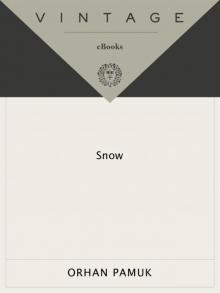 Snow
Snow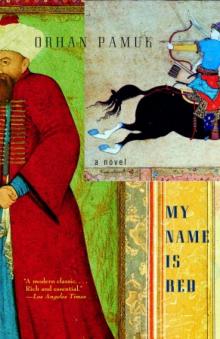 My Name is Red
My Name is Red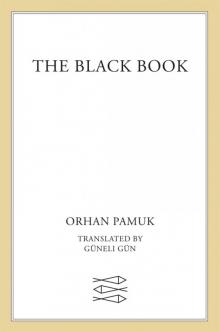 The Black Book
The Black Book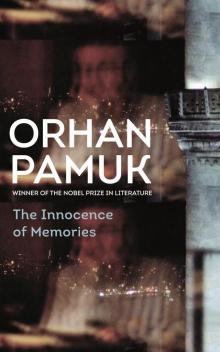 The Innocence of Memories
The Innocence of Memories The White Castle
The White Castle Other Colors
Other Colors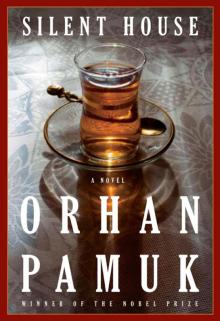 Silent House
Silent House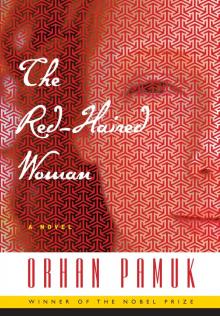 The Red-Haired Woman
The Red-Haired Woman The Museum of Innocence
The Museum of Innocence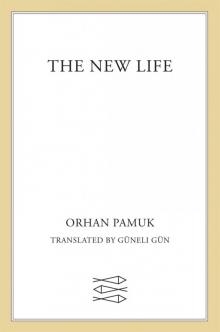 The New Life
The New Life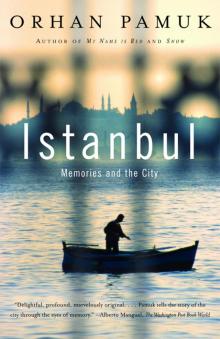 Istanbul
Istanbul